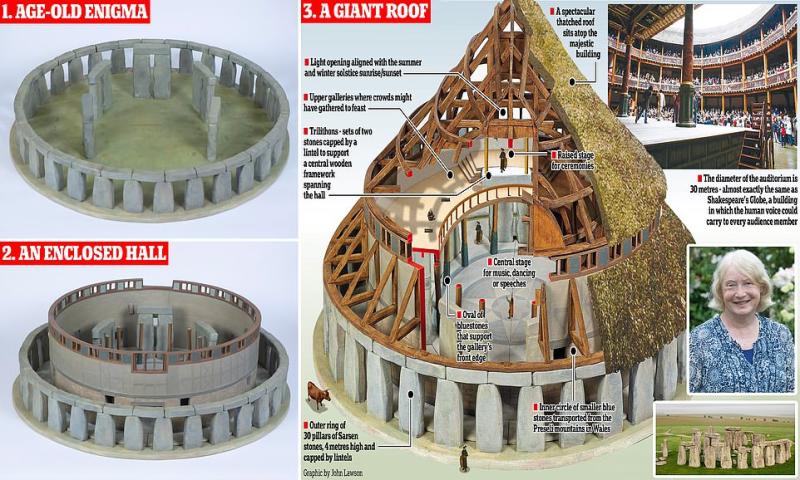Architect's models depict Stonehenge as base for vast Neolithic temple


Wow. Cool if true! It's a slide show so you pretty much have to check out the link to get the whole thing, but it's a pretty cool idea.

Full screen1/11 SLIDES © Provided by Daily Mail One of the biggest mysteries surrounding Stonehenge is how any of it is still standing, given the predations of souvenir-hunters and vandals, including the great 17th-century architect, Sir Christopher Wren, who paid many visits to the ancient monument on Salisbury Plain and whose surname can still be seen carved on one of its stones. The Victorians were even more destructive, renting chisels to visitors so they could take great chunks of Stonehenge home, and over the centuries farmers purloined stones for building their barns. Perhaps they might all have had more respect for the monument, now a Unesco World Heritage site, had they heard the extraordinary theory being put forward in a new book by 62-year-old landscape architect, Sarah Ewbank. She would have us believe that the Stonehenge we see today represents the ruins of a majestic building that once had a spectacular thatched roof.

Tags
Who is online
437 visitors

Makes more sense to me than thinking it was just the stones, originally.
It seems like a reasonable idea, and over the millennia, the stones are the only component that would likely survive.
We have a tendency to look at ancient statues or structures and assume we are seeing the whole thing. For example, people assumed such objects were always all white, but modern closer investigative techniques have revealed that they were brilliantly colored. Or the the Great Pyramid, which now looks like a rough pile of stones, but was once covered in a smooth layer of limestone.
Interesting hypothesis. So much of history has been lost to the ages. The mysteries of the past are as intriguing as the mysteries of the future.
Totally cool and possible. As she said, why are there two "knobs" atop each of the surviving stones if not to lock lintels in place.
Lintels carry load.
6 lintels survive on the outer circle, three massive ones on the inner circle.
One wonders which of England's castles have a lintel or two "borrowed" from Stone Hedge.
That is an interesting theory, and certainly possible. Stonehenge is a fascinating place to visit. There are other similar sites in England.
There is a single trilithon dating to the 13th Century on the island of Tongatapu in the Kingdom of Tonga that I visited one time. Its nickname is "Stonehenge of the Pacific". The following link has a picture and some information:
Here is the Wikipedia page about it:
Wow. Gate looks almost grown in place.
That's actually funny.